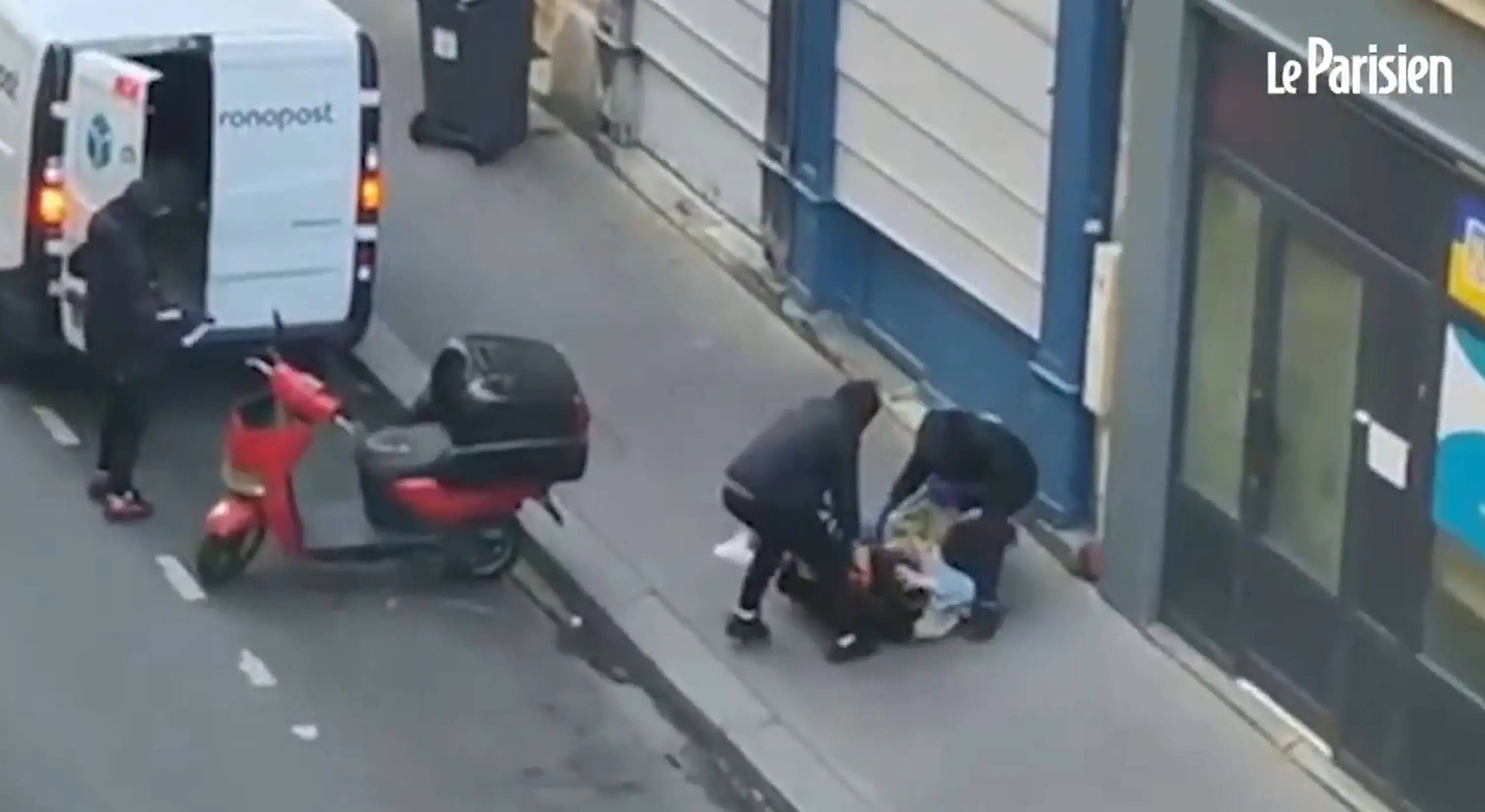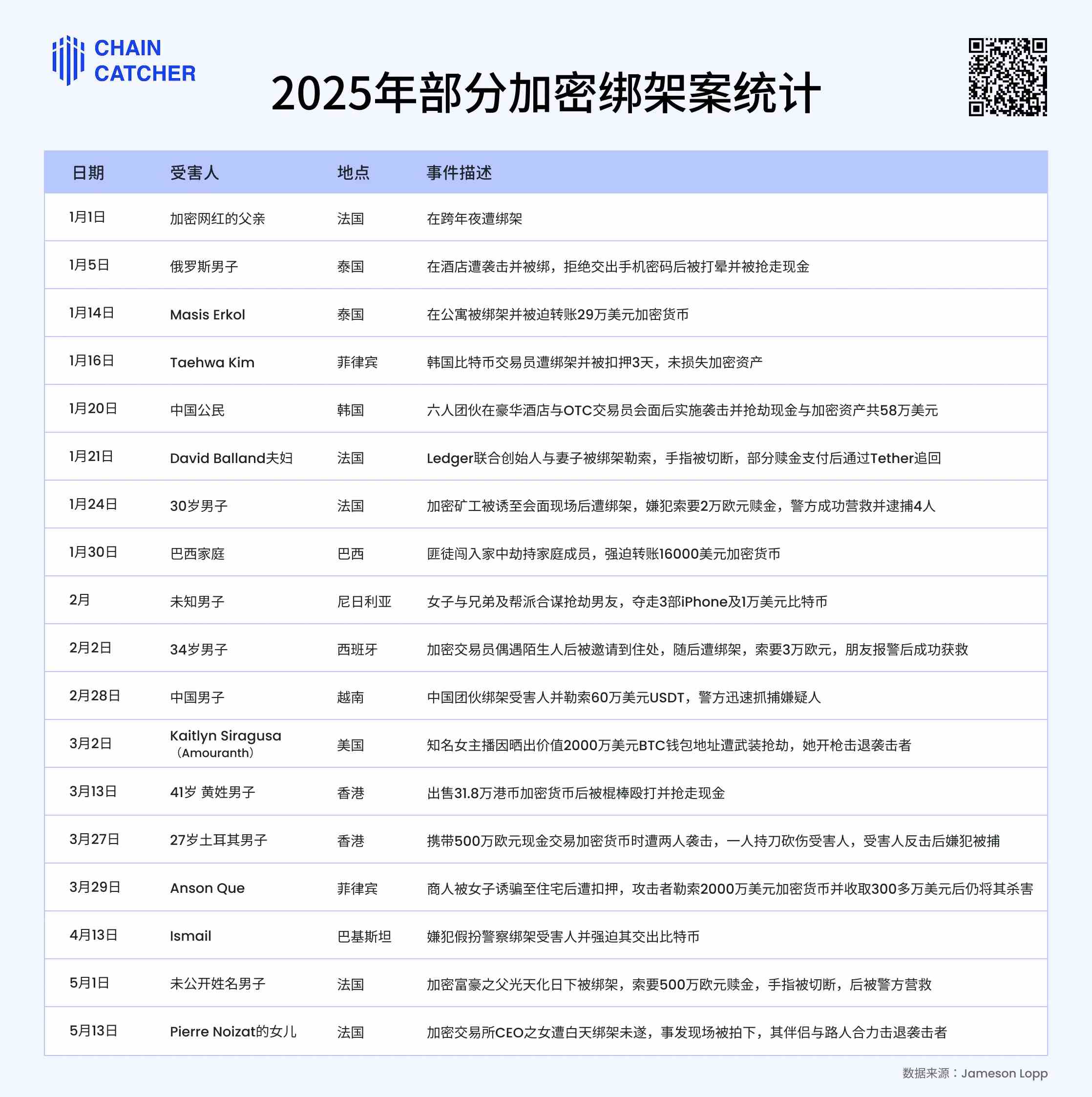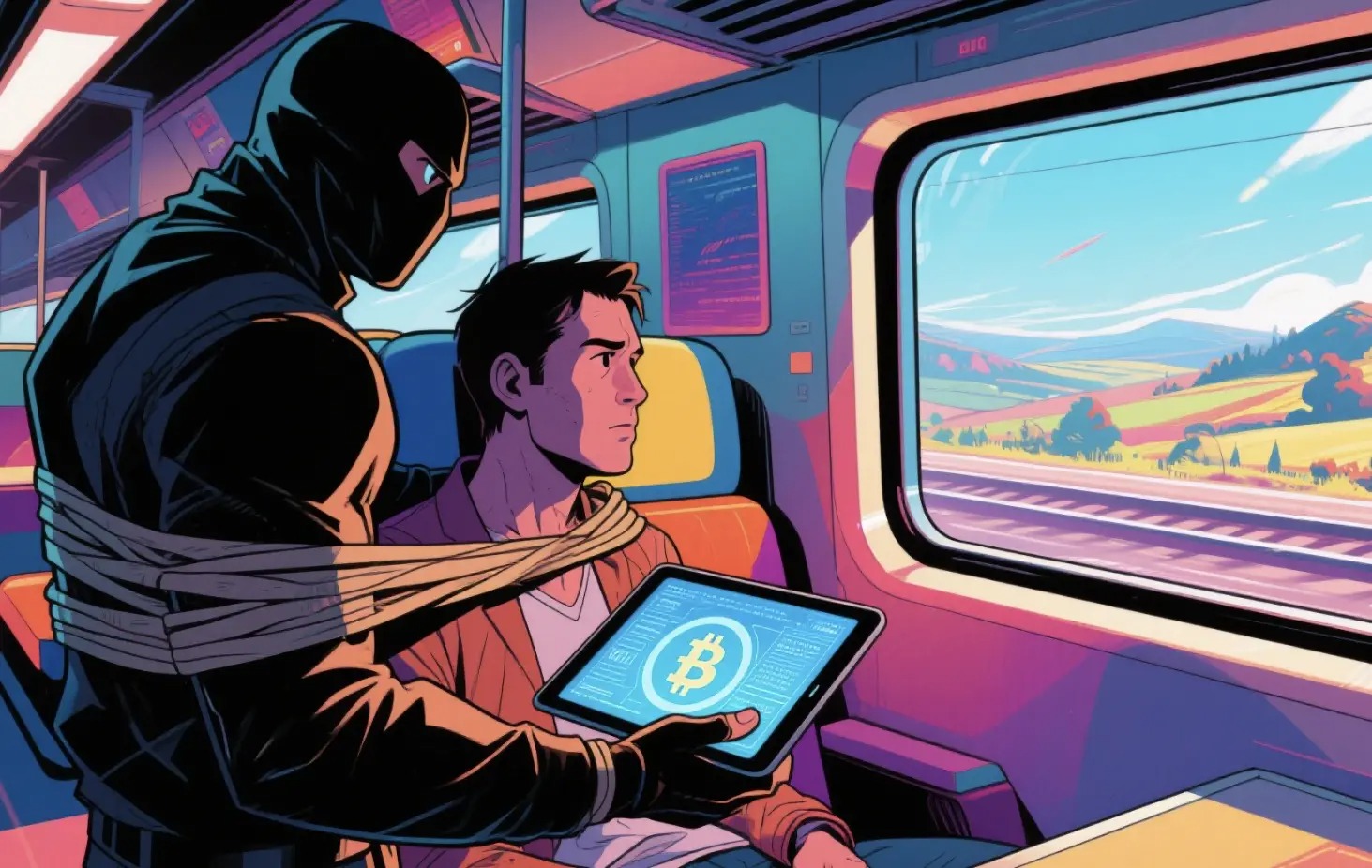Author: Fairy, ChainCatcher
Editor: TB, ChainCatcher
Where do you live? What time do you go out? Do you post about your crypto assets on social media?
These seemingly harmless messages are becoming navigation coordinates for criminals in the real world. As Bitcoin breaks through historical highs and crypto assets enter the mainstream, not only institutions are paying attention, but violent criminals are also eyeing the wealth on the chain and you off the chain.
The wave of violence involving kidnapping, coercion and demands for money may be more serious than we imagined.
Kidnapping incident draws attention from political circles
Recently, a video was widely circulated on the X platform: the daughter and grandson of the co-founder of the French crypto exchange Paymium were recently kidnapped in the 11th district of Paris. Four masked gangsters ambushed and tried to drag the mother and son into a van. The woman resisted fiercely and took the gangster's weapon, causing chaos. After passers-by intervened, the kidnappers fled in panic.
The incident quickly attracted public attention and even alarmed the French political circles. French Interior Minister Bruno Retailleau has announced that he will urgently convene cryptocurrency industry practitioners this Friday to discuss how to deal with the increasingly frequent violent kidnapping threats against crypto entrepreneurs.

The global wave of crypto violence
The Paris kidnapping attempt is just the tip of the iceberg in a string of violent threats facing the crypto industry.
According to statistics from a public tracking tool created and maintained by Jameson Lopp, CTO of security company Casa, at least 22 physical attacks against cryptographic practitioners or their relatives have been recorded worldwide in the first five months of 2025 alone. This number is almost equal to the total number for the whole year of 2023 (24) and is close to the total number for 2024 (32). What is worrying is that these are only the publicly disclosed parts, and the real number may be much higher than this.
The attacks are not limited to a certain region. France, Brazil, Hong Kong, the Philippines... Wherever crypto wealth goes, the risk of violence also spreads. We have compiled some of the cases:

How to build a safety line in life?
The address on the chain reveals the size of assets, the speech on social media reveals the activity track, and the lifestyle implies the economic strength. When the risk spreads from the virtual world to real life, how can we protect the personal and property safety of ourselves and our families?
Real security starts with awareness and is implemented in every detail of life. ChainCatcher has compiled some practical suggestions to help you build a real security line of defense in your daily life:
Low profile is the most reliable layer of protection
Try to avoid showing off your assets, screenshots of trading income, etc. If you are a KOL or trader with a public identity, it is recommended to "desensitize" your on-chain address to avoid directly associating your identity with huge assets.
Do not disclose location information at will
Many people are used to posting content such as "Just arrived in Singapore" or "Meeting in Central, Hong Kong tonight" on social media, which will greatly reduce the cost of your being "accurately spotted". It is recommended to delay posting location updates and avoid disclosing your permanent residence, travel routes, and hotel addresses. When attending industry conferences, try to keep your accommodation and itinerary confidential.
Separate the on-chain and real-world identities
High-net-worth wallets should try to break away from social identity associations. Avoid setting ENS domain names, address abbreviations, and X usernames that are too similar to reduce the possibility of social graph restoration.
Be cautious when meeting someone, and verify your friends
Some criminals set up traps under the guise of "business negotiation" or "offline meeting". In over-the-counter transactions, it is best to choose public places with surveillance (such as Starbucks and office building lobbies), inform friends of your whereabouts in advance, and set up a regular safety reporting mechanism.
Make your home part of your security system
Consider using a business address to receive deliveries. Installing smart door locks, cameras, and alarm systems can not only improve vigilance, but also form countermeasures when danger occurs.
Safety awareness is a "consensus agreement" among family members
Security awareness should not be the sole responsibility of the individual. Even if the individual is vigilant, family members, children or assistants around him should also have basic awareness of prevention, such as not revealing location information or asset status over the phone, and knowing how to identify phishing emails and fraudulent text messages. For high-net-worth individuals, the entire family may often become a potential target of attack, so all members should receive basic education on digital and physical security.
Pre-set emergency response plan
If you manage a large amount of crypto assets, it is recommended to develop an "emergency strategy" to ensure that even if attacked, you can prevent funds from being quickly transferred. At the same time, establish an "emergency code" mechanism with trusted contacts so that you can send a signal for help if you are coerced. For high-risk groups, you can consider purchasing "kidnapping and extortion insurance" or hiring a professional security team.

Wealth is visible, safety is priceless
When violence becomes the most primitive "private key extractor", no amount of 2FA can help. We are used to defending our assets, but we often ignore the most vulnerable part: our own flesh and blood.
A cold wallet can protect your wealth, but a calm sense of security can save your life.















